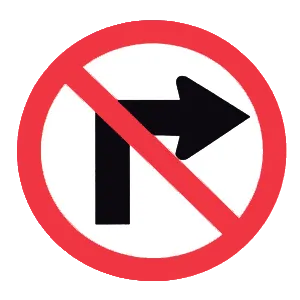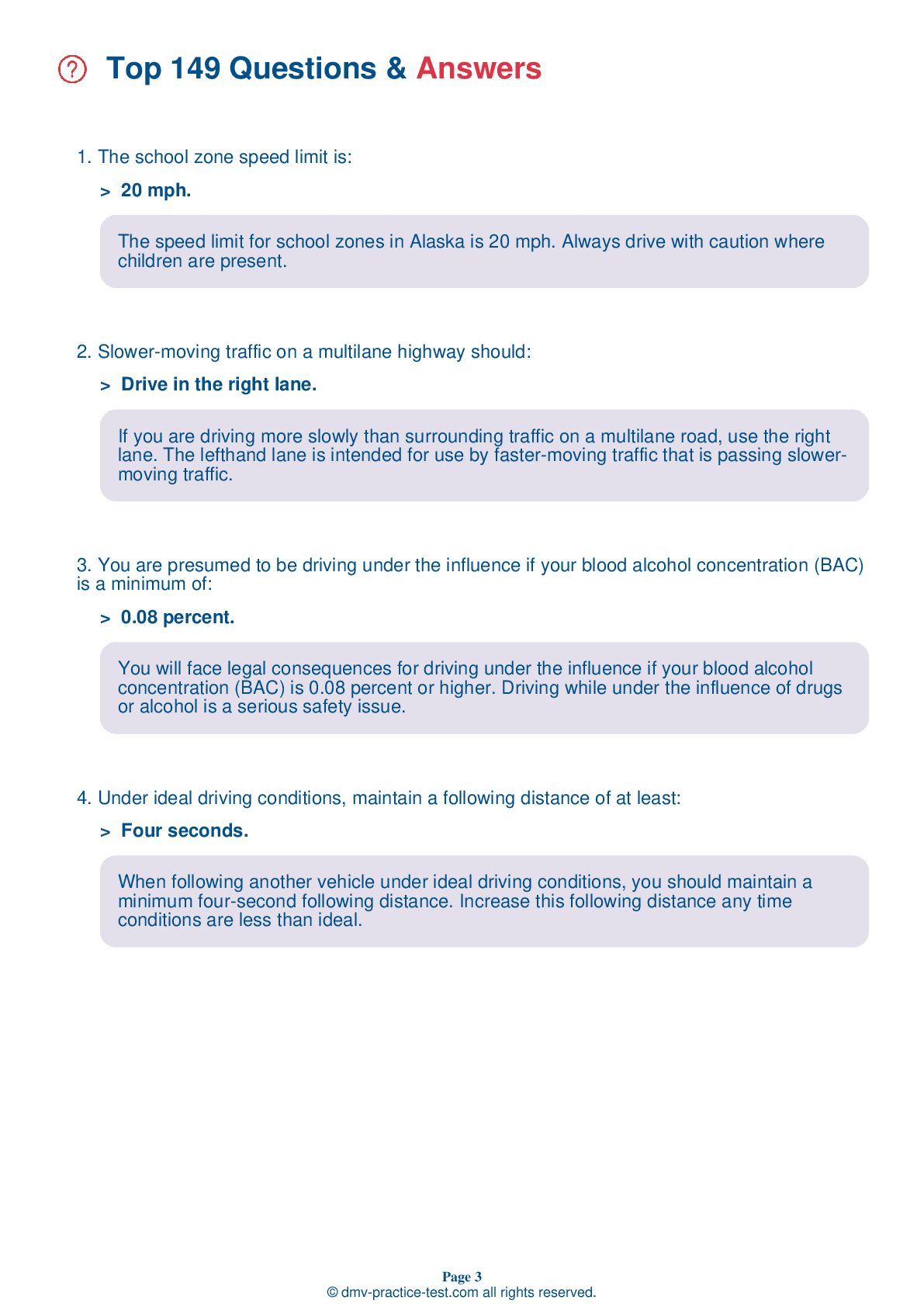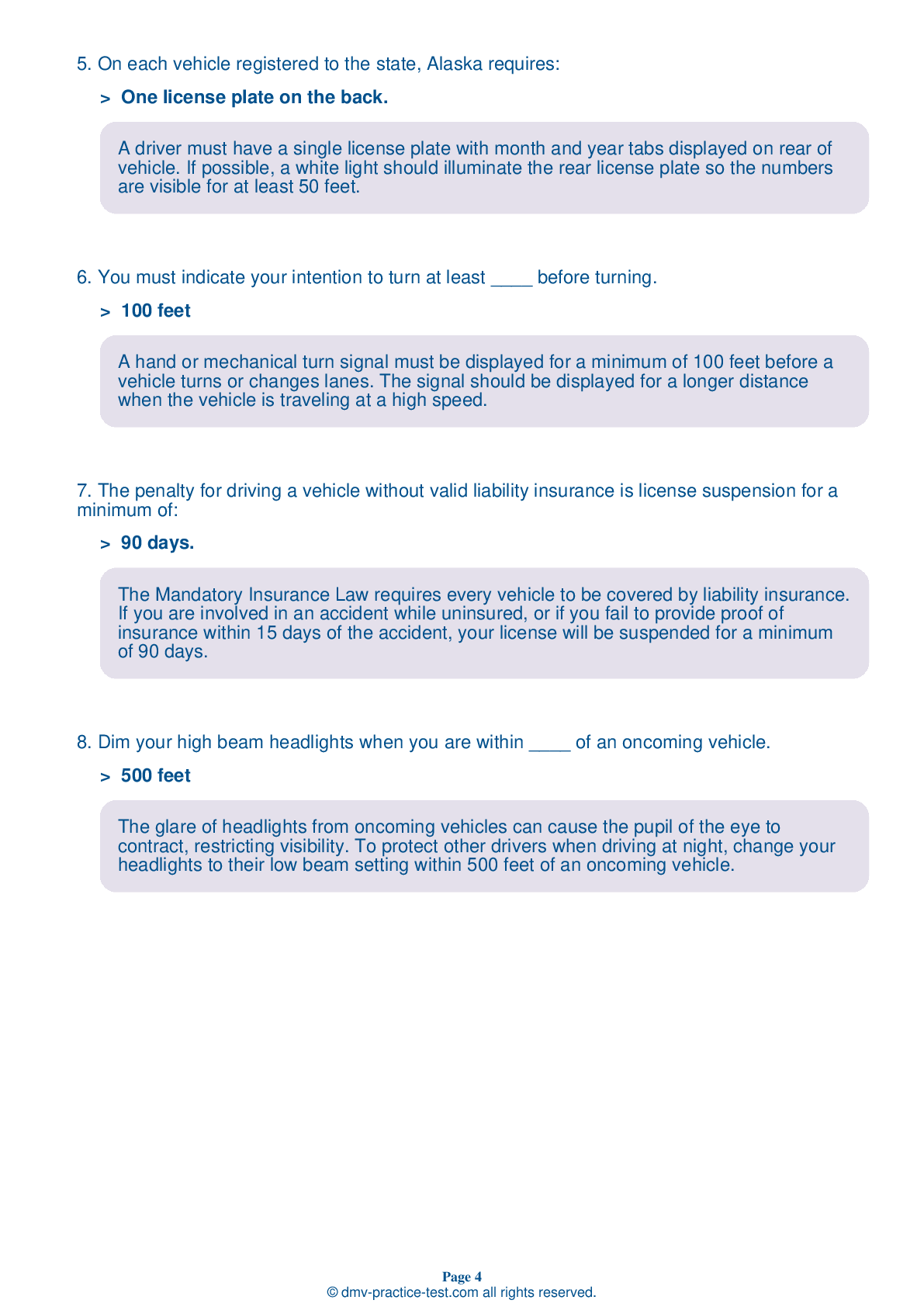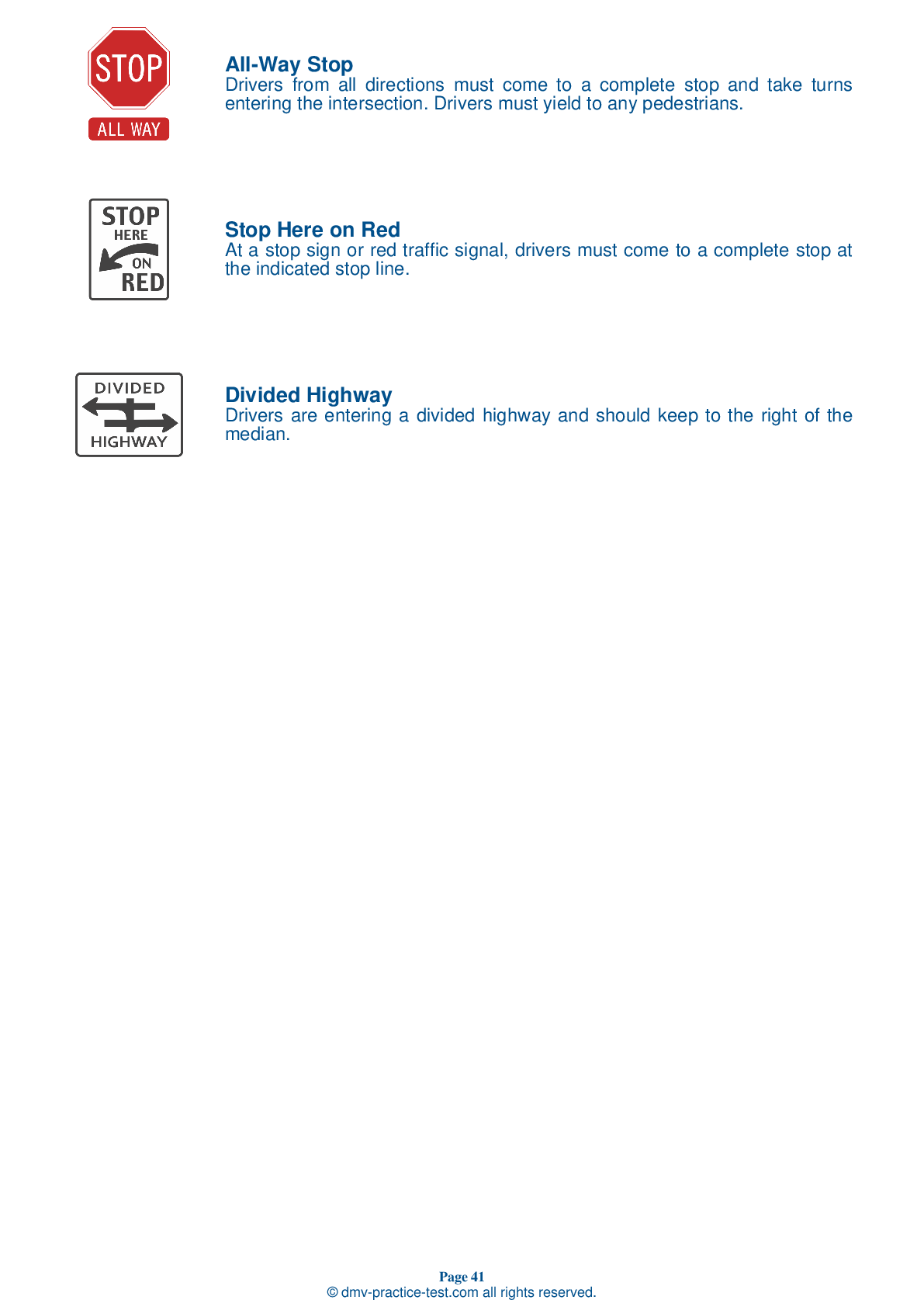FREE Alaska DMV Practice Test #1 Page 2 of 3
This Alaska DMV practise tests has just been updated for January 2025. It contains questions based on the most essential traffic signs and limitations from the Alaska Driver Handbook for 2025. Use actual questions that are very close (often identical!) to the DMV driving permit test and driver's licence exam to prepare for the DMV driving permit test and driver's licence exam.
To help you recall the topics, each practise test question includes a suggestion and explanation. The written component of the official DMV test will include questions about road rules, traffic signs, and driving statutes, as well as information from the Driver Handbook.
To get the required passing mark, you must correctly answer 16 out of 20 questions. Take our DMV practise exam to help you prepare for your Alaska instruction permit or driver's licence.
The DMV exam is available in multiple languages.
Using any form of testing aid will result in an automatic failure, and the DMV may take further action against your driver's licence, so don't do it.
7 . If two drivers arrive at the same time to a four-way intersection controlled by stop signs:
Yield the right-of-way to the driver on your right at a four-way intersection if you both arrive to the intersection at the same time. You may then proceed when it is safe to do so.
8 . What can you do to avoid the need to make emergency stops while driving in traffic?
Keeping a safe following distance will enable you to react to an upcoming problem without the need for a emergency stop, which could cause a driver behind you to crash into the back of your vehicle.
9 . Increase your following distance when:
You should increase your following distance when you are behind a large vehicle that blocks your vision, when driving in bad weather or heavy traffic, when exiting an expressway, when behind a motorcycle or bicycle, and if someone is tailgating you.
10 . When approaching a traffic signal displaying a steady green arrow, drivers:
A green arrow displayed on a traffic signal tells drivers that they may turn in the direction of the arrow. You must be in the proper lane for such a turn. Yield the right-of-way to vehicles and pedestrians already in the intersection.
11 . This sign means:

This sign indicates that right turns are prohibited. Do not make a right turn at an intersection where this sign is posted.
12 . You should honk your horn when you:
Your horn should be used as a warning in situations where you think another driver or a pedestrian does not see you. For example, if a child begins to run into the street in front of your vehicle, you should sound your horn.
13 . Parking lights may only be used:
You must use parking lights when parking your vehicle. Only use parking lights when your vehicle is not in motion.
See the exact questions that will be on the 2025 Alaska DMV exam.
99.2% of people who use the cheat sheet pass the FIRST TIME
LT gives us an insight on how the cheat sheet provided her with all the study questions she needed before taking her test.
Joe initially studied with the handbook and failed his test, he eventually found us online, studied and pass his test the first time around.



